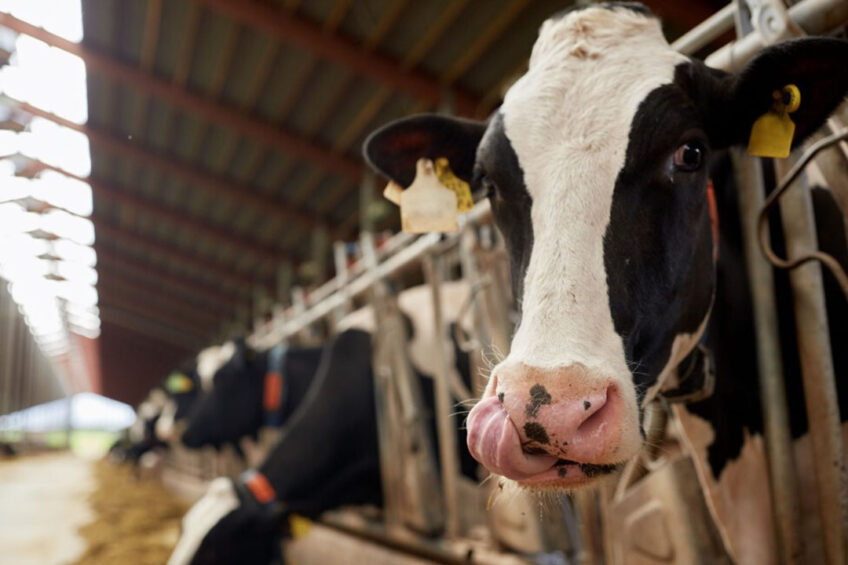Dairy farmers hear how nitrate can reduce methane

As the quest to find new ways of reducing methane produced by dairy cows intensifies, the use of nitrate in diets has been highlighted as a solution.
Farmers attending a seminar at Total Dairy in the UK learned how such dietary intervention can play a key role in reducing carbon footprints in the future.
One of the key speakers, Dr Sander van Zijderveld, who is Cargill’s ruminant lead for west Europe, emphasised the science behind adding nitrate: “Increasing productivity is a proven way of reducing methane emission intensity, and we’ve been doing this for many years, with fewer animals producing larger yields more efficiently. But, going forward, direct dietary interventions will also play a role in reducing the carbon footprint in ruminant systems.”
Nitrate in ruminant diets
Van Zijderveld, who completed a PhD in methane reduction at Wageningen University, added that one proven approach is the use of nitrate in ruminant diets to reduce enteric methane production. This technique, supported through extensive research by Cargill, involves the use of dietary nitrate to redirect hydrogen produced in the rumen during fermentation.
Van Zijderveld said: “This hydrogen would usually combine with carbon and produce methane. But if it combines with calcium nitrate supplied in the diet then ammonia is produced. This ammonia can then be used in the milk production pathway.”
Using over 10 years of research findings into the use of dietary nitrate, including peer-reviewed papers and trials in dairy and beef cattle, Cargill has developed its own methane-reducing feed product.
This feed product, called SilvAir, is a carefully manufactured feed-grade calcium nitrate comprising 76% nitrate and 22.5% calcium, with a dry matter of 84%.
Reducing methane
“It works by mopping up some of the hydrogen produced in the rumen during fermentation of feedstuffs and reduces the amount available to combine with carbon to produce methane. Instead, this ammonia is used as a starting point for milk protein production,” Van Zijderveld said.
“Including SilvAir in dairy diets at the recommended rates has been shown to cut methane emissions by up to 10%, with no negative impact on performance. This represents a reduction in the production of CO2 equivalent of 1kg per cow per day when included at a rate of 1.6% of the total diet dry matter in dairy diets.”
Cargill says the product also offers an alternative source of dietary protein and calcium. Based on its nutritional value, 100g of SilvAir can replace 40g of feed-grade urea or 250g of soybean meal in dairy diets. And 100g of SilvAir can replace 60g of limestone, which is a source of calcium and used in dairy mineral packs for milking cows.
Van Zijderveld said: “We are committed to helping farmers meet the production, welfare and environmental challenges by offering solutions that will promote greater sustainability. Management, nutrition and feed additives will all play a role. This is a great example of a feed product that can help farmers meet these environmental challenges while maintaining animal production.”
The product is authorised for use in animal feed under EU regulations, and it is included in the online carbon footprint calculator Cool Farm Tool’s listings of products, which can be used to adjust on-farm carbon footprint through reduced methane output.






